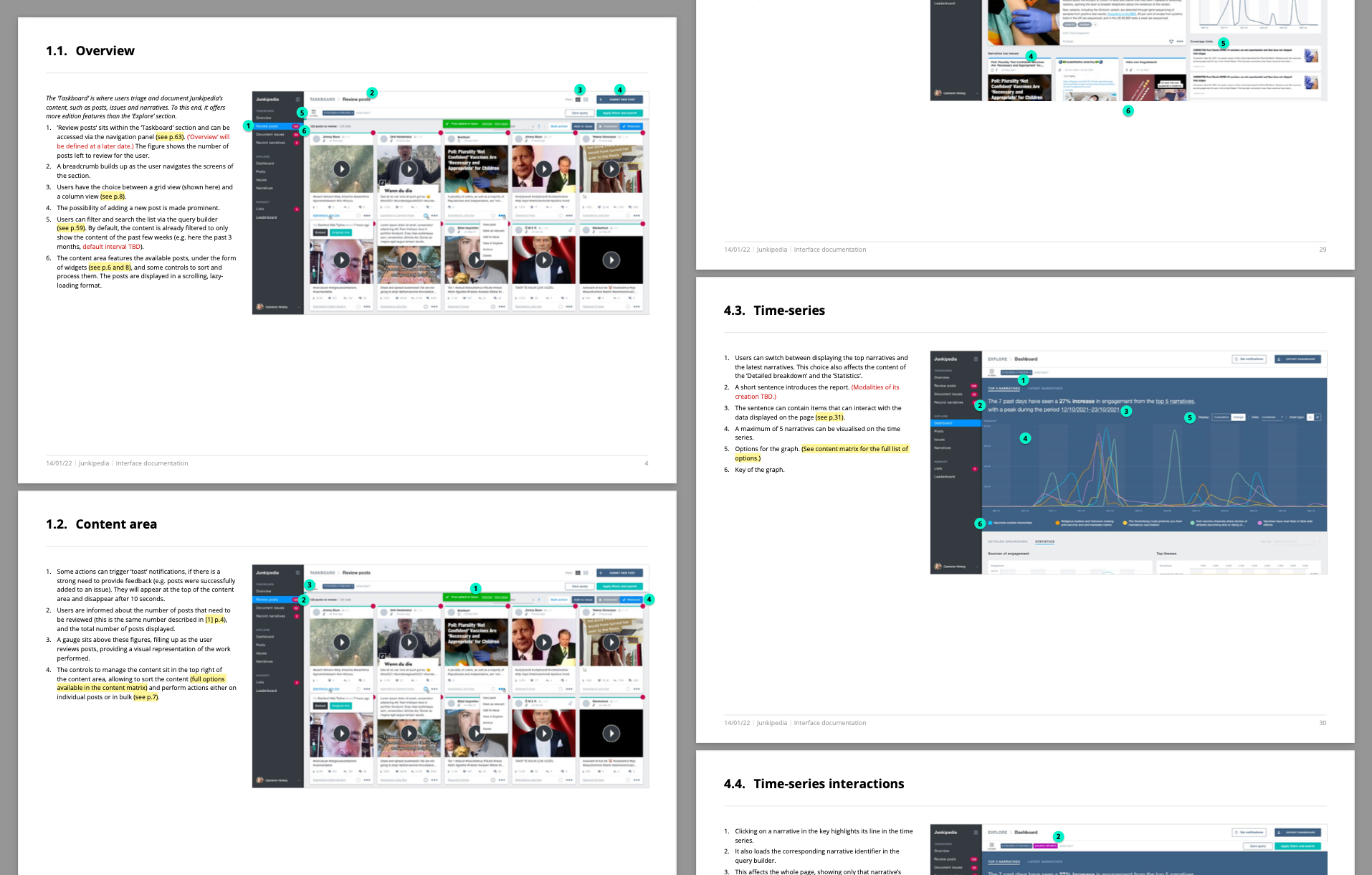JUNKIPEDIA
UX & UI design, Information architecture, Design system, Product strategy
An online tool for journalists and investigators to track disinformation narratives as they develop on social media.
Junkipedia is a monitoring platform designed to analyse public social media content "across 15 different social media platforms, including Facebook, Instagram, YouTube, Twitter/X, TikTok and Telegram."
Aimed at researchers, journalists, and civil rights organisations, Junkipedia provides a powerful suite of features that allows to build context from the buzz, understand online narratives, and identify influencial actors in the attention economy.
I was approached by the Junkipedia team to assist them in refining the concepts and mental models employed in the first iteration of the platform, improve the user experience and the interface, and build a comprehensive design system from the ground up.
NARRATIVES
At the core of Junkipedia's philosophy is the narrative, a category that helps investigators group disparate pieces of content, across thousands of social media channels, into a comprehensive unit.
I first performed a review of the mental model as it currently existed, and came up with suggestions to streamline the process of creating narratives. These processes were mapped on flowcharts, taking into account the activity of the different user types at each step of the journey, and discussed with the Junkipedia team.


This important rationalisation work immediately impacted the user journeys and screenflows to come in the upcoming redesigns.
WIREFRAMES
The next step was to redesign the interface. The goal was to be as little destructive as possible, keeping the broad structure of the tool (left-hand side navigation panel, infinite scroll content area, etc.), yet improving the overall interface where needed.
A long phase of wireframing ensued, iterated each step of the way through our design workshops with the Junkipedia team.
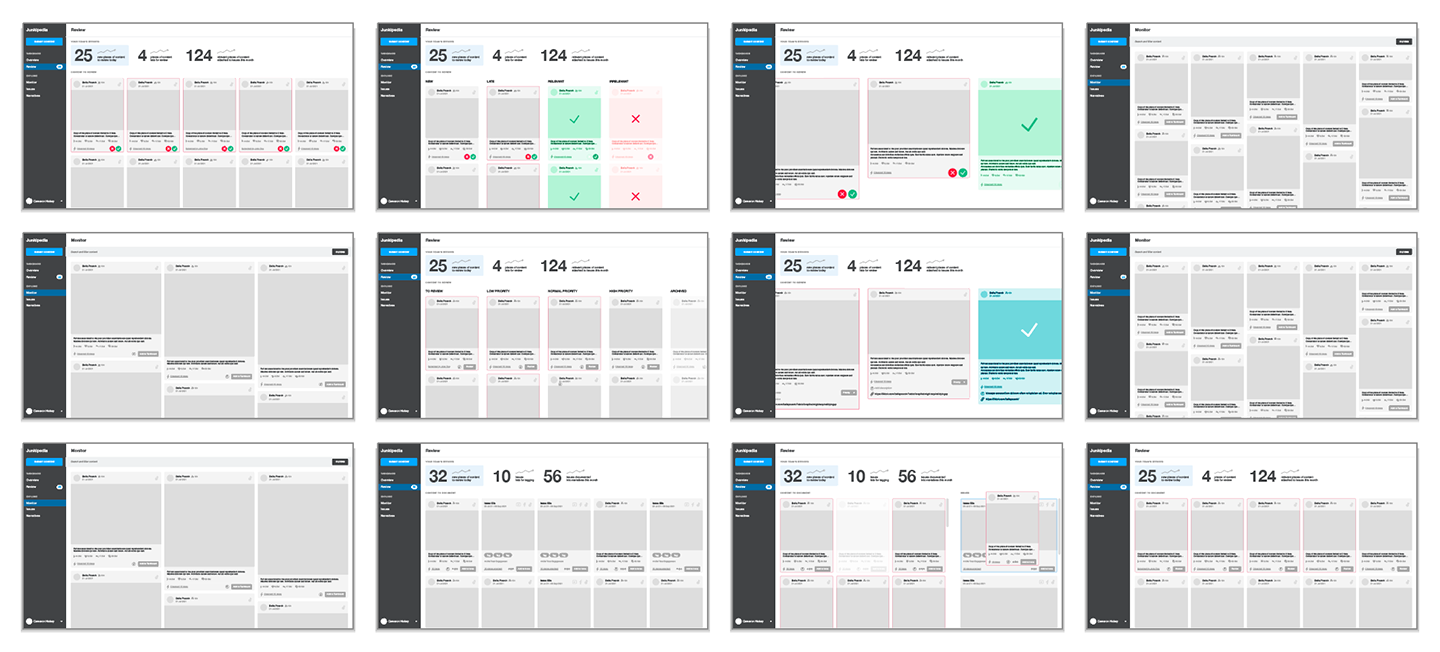
Screens were designs as part of distinct user flows, illustrating a series of actions taken by a user to perform a key task, such as browsing, tagging and categorising social media posts, establishing the relevancy of sources, reviewing analytics, etc.
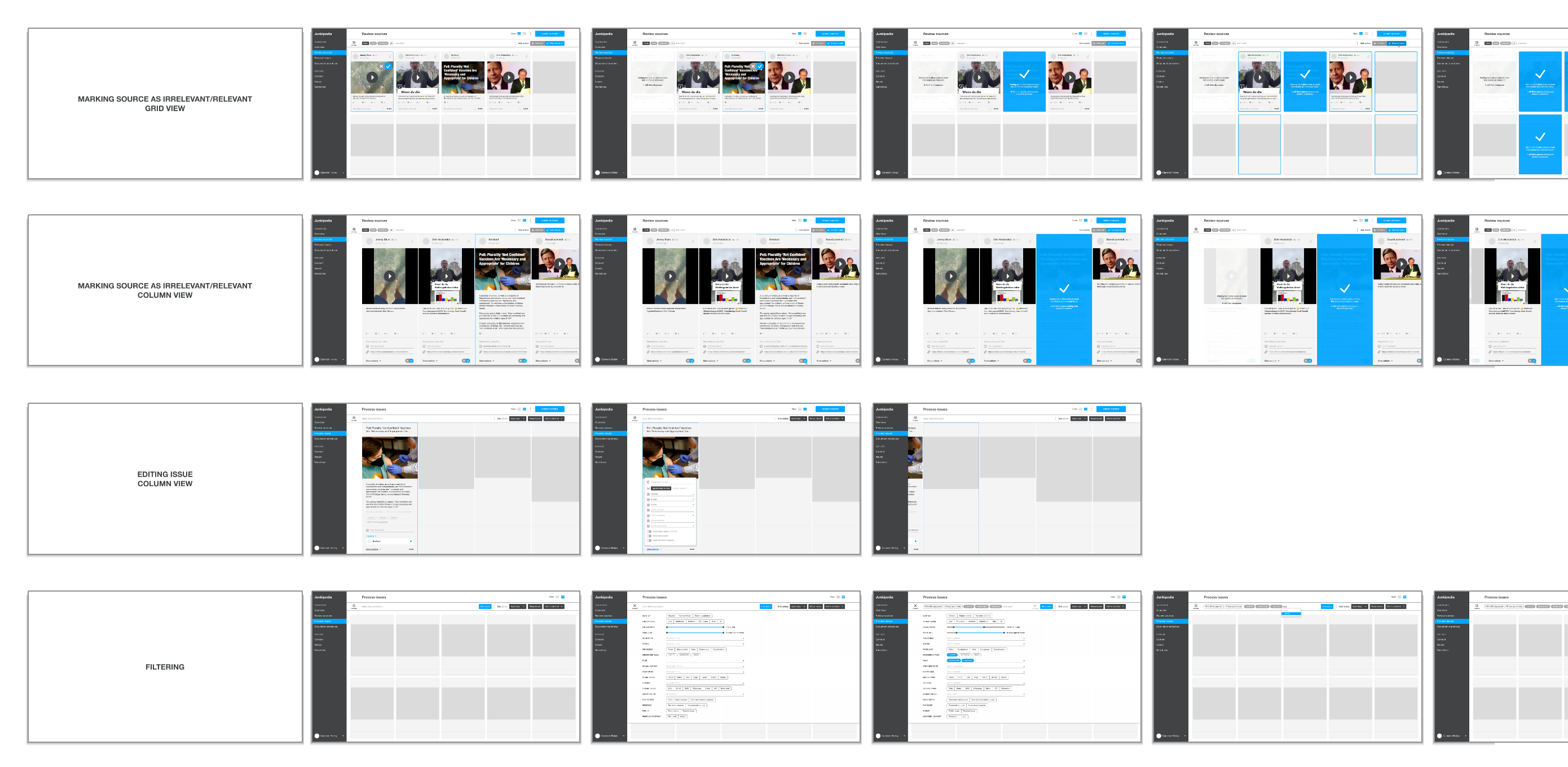
The natural language module, the query builder, was likewise wireframed to illustrate the many options available to search and filter the content.
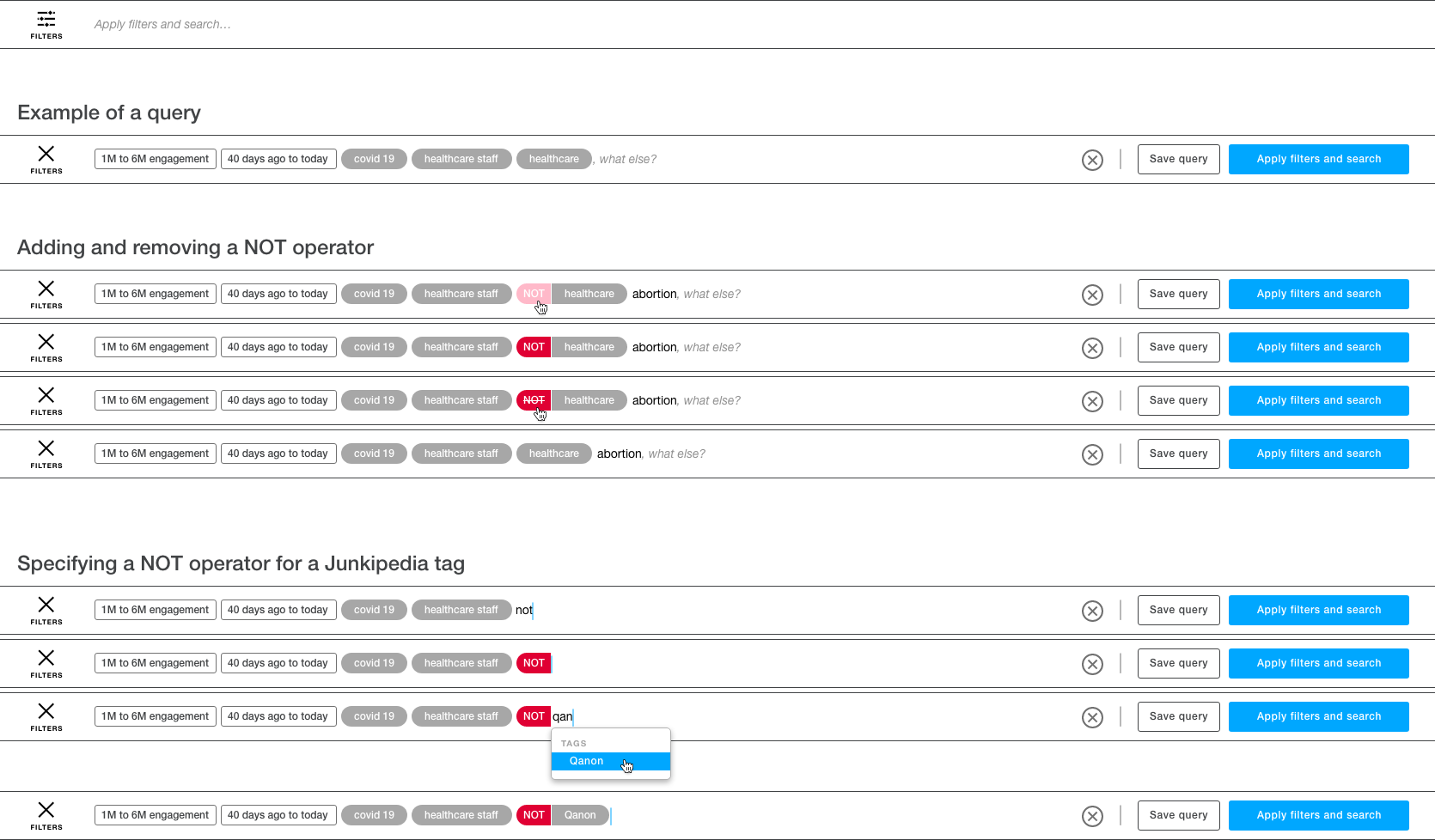
VISUAL DESIGNS
The information architecture of the tool firmly in place, it was time to produce a clear visual language that could be replicated across the many screens and sections of Junkipedia. This included new icons, components (calendar, tooltips, etc), and data visualisations.
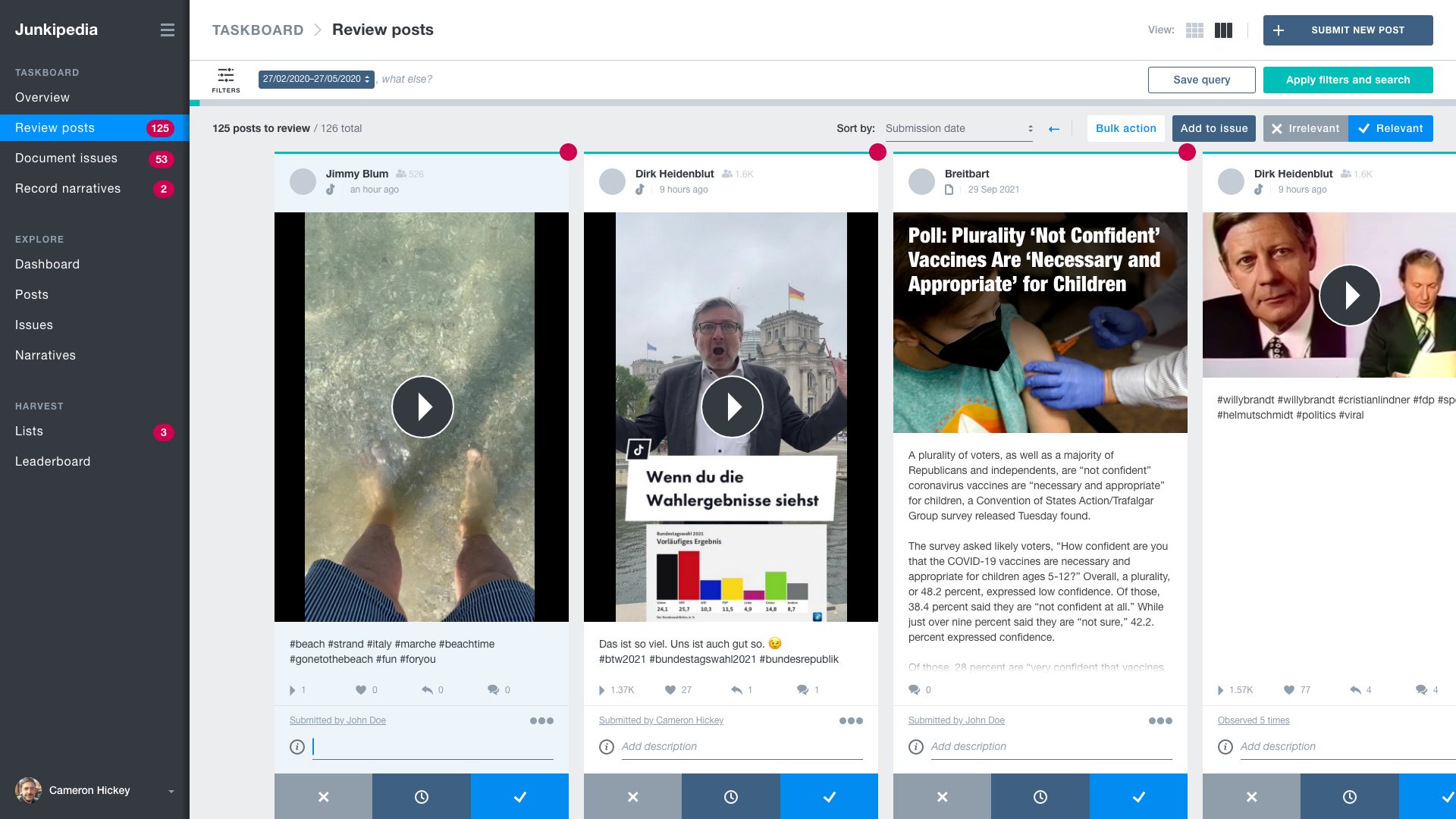


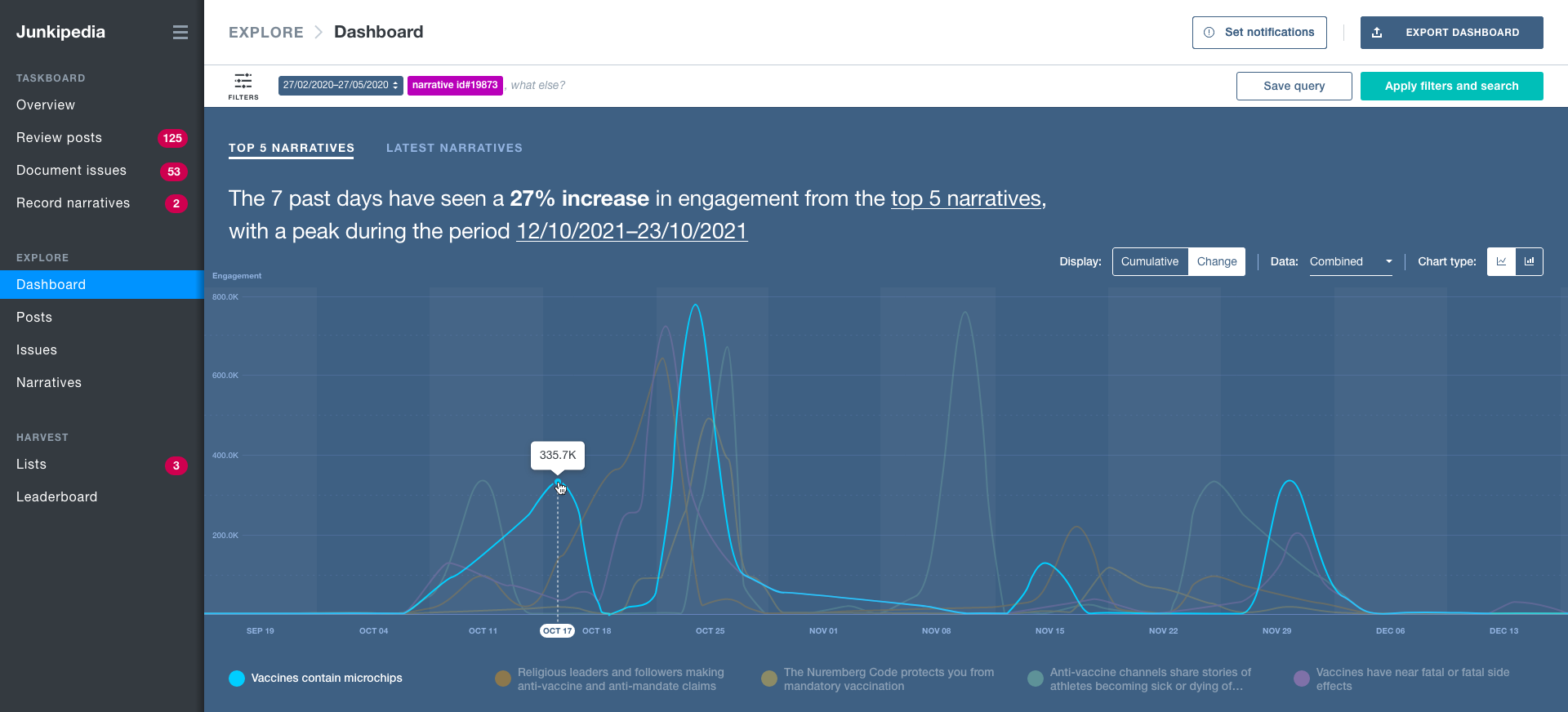
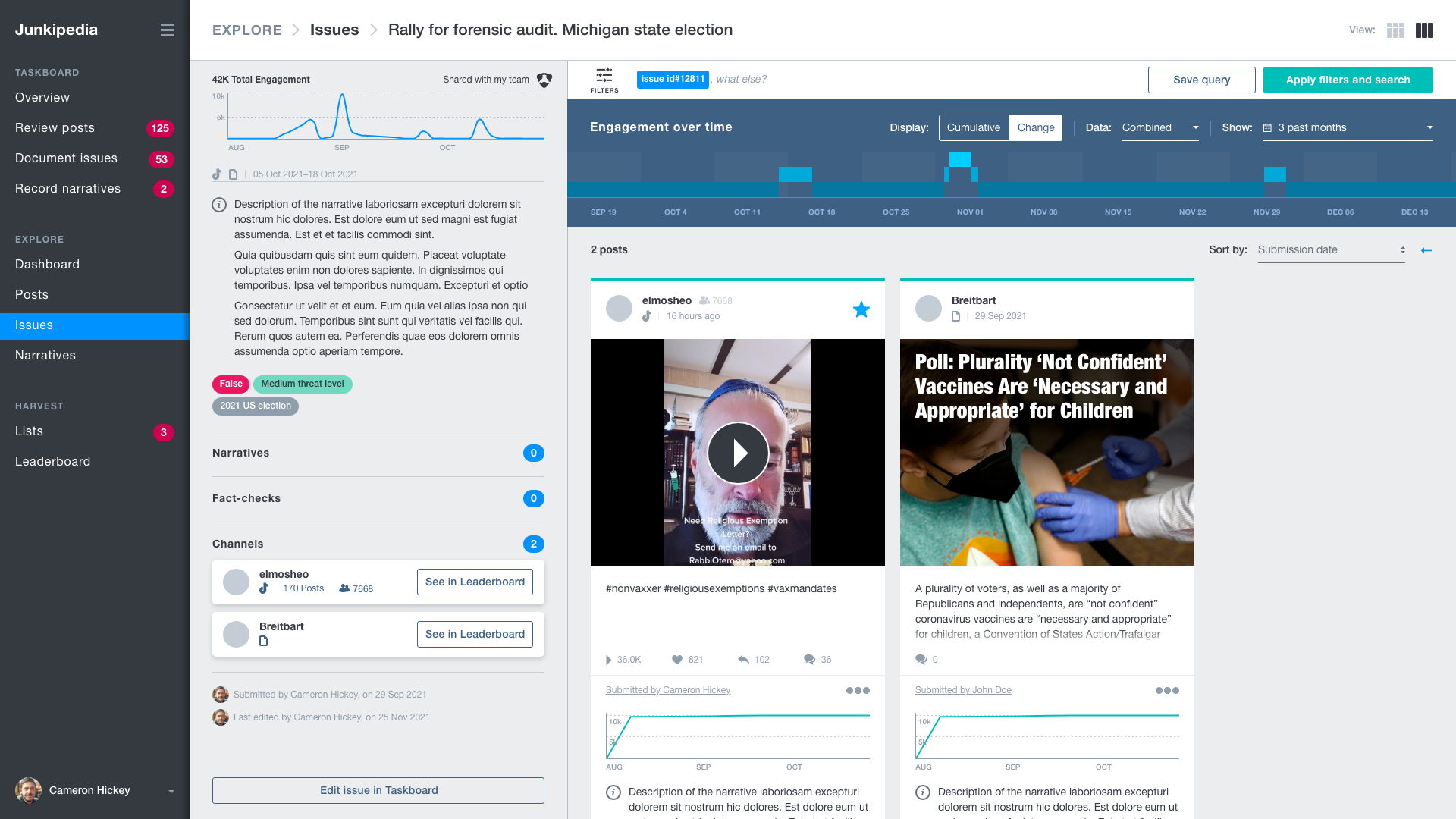
The designs were created on Sketch, and then exported on Zeplin. Zeplin helps generate a comprehensive styleguide straight from the designs, as well as interactive mock-ups highlighting interface details such as margins, paddings, and font styles.
DOCUMENTATION
The designs were then precisely documented, describing every component and interaction. This was geared towards facilitating communication within the Junkipedia team after the end of the engagement, as well as providing explanations to the developers charged with the task of implementing the redesign.
